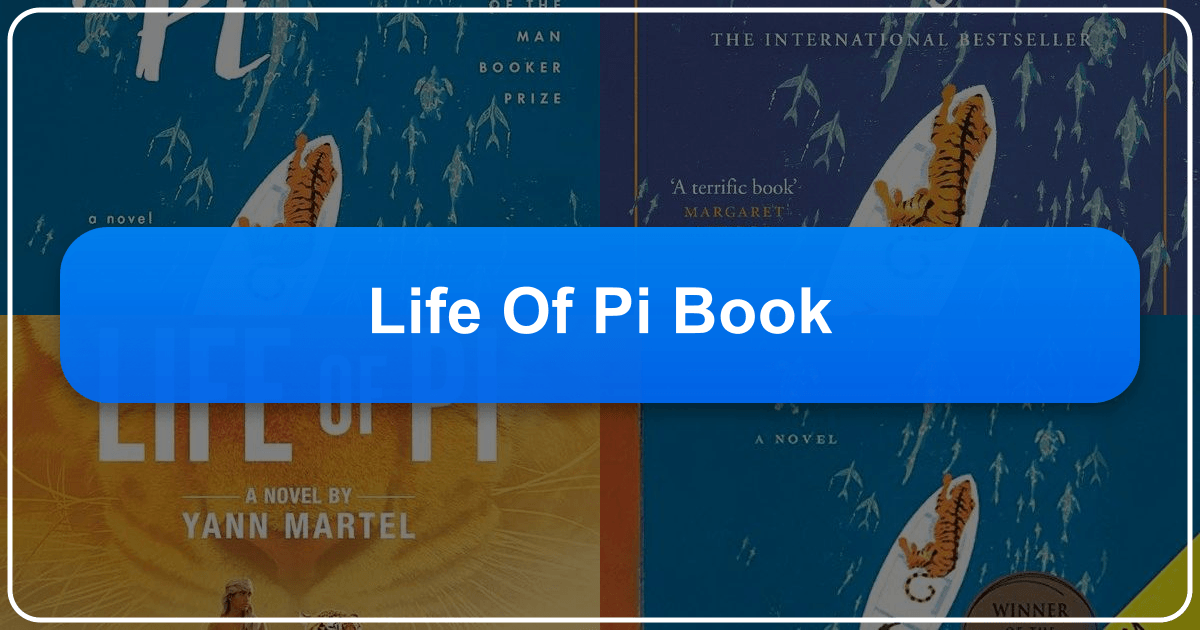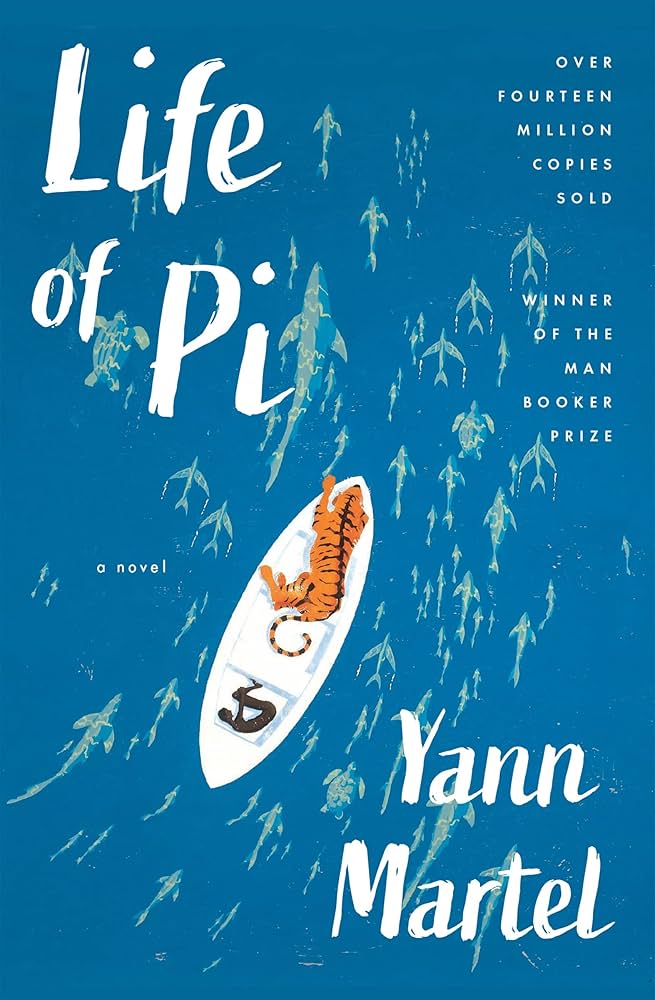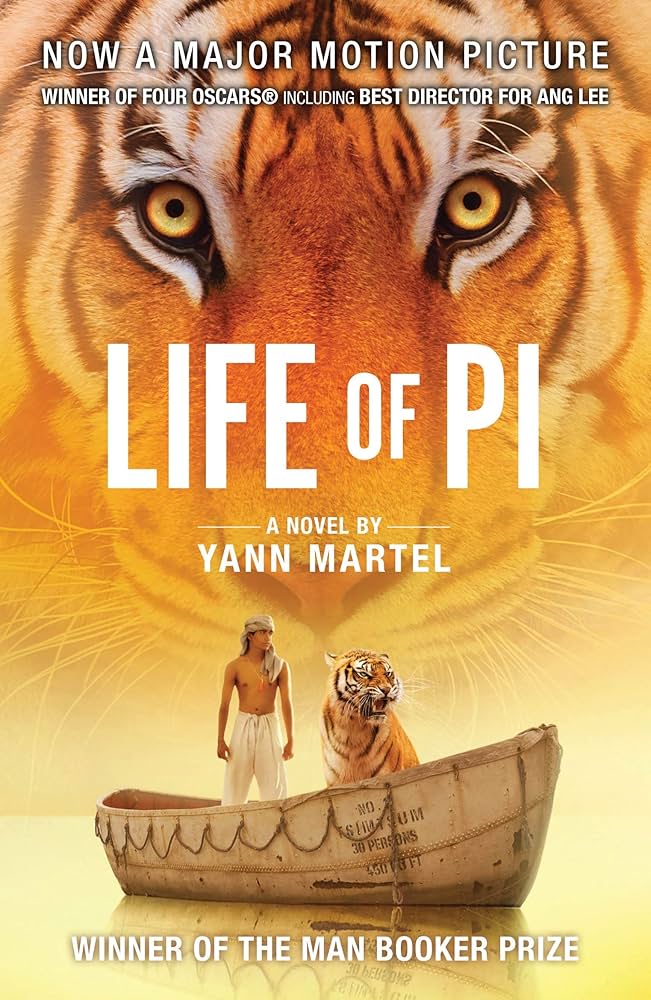Life of Pi: A Deep Dive into a Literary Masterpiece

Yann Martel’s Life of Pi is more than just a captivating adventure story; it’s a multifaceted work of fiction that explores themes of faith, survival, storytelling, and the very nature of reality. This exploration will delve into the novel’s intricacies, examining its various aspects through the lenses of several key topics: its genre and classification, the author’s background and writing style, the educational and life lessons it imparts, the role of libraries in its context, and its profound cultural impact.

Genre, Classification, and Literary Merit
Life of Pi defies easy categorization. While often labeled as an adventure novel, its fantastical elements, philosophical undertones, and metafictional narrative structure transcend simple genre boundaries. It blends elements of adventure fiction with elements of magical realism, creating a unique reading experience. The narrative’s central question—which story is “true”—forces the reader to confront the nature of truth and the power of storytelling itself. The novel is considered a modern classic, earning accolades for its imaginative storytelling, intricate plot, and profound exploration of human experience. Its impact is further solidified by its inclusion on numerous “best books” lists and its critical acclaim. This blend of genres and sophisticated narrative techniques positions Life of Pi as a significant literary achievement, appealing to a broad spectrum of readers. Its enduring popularity ensures its continued relevance across various educational settings and reading communities.

Bestseller Status and Acclaim
Beyond its unique narrative structure, Life of Pi achieved immense commercial success, becoming a significant bestseller across the globe. Its translation into numerous languages and its consistently high sales demonstrate widespread appeal and resonate deeply with readers across diverse cultural contexts. The novel’s widespread popularity has cemented its place as a contemporary literary classic. This significant commercial success not only highlights the inherent quality of Martel’s storytelling, but also reflects the broad appeal of the novel’s underlying themes. The book’s enduring popularity also underscores the significant cultural influence it has had on subsequent literature and adaptations.

Yann Martel: Authorial Style and Influences
Understanding Yann Martel’s background is crucial to appreciating the nuances of Life of Pi. Born in Spain to Canadian parents, Martel lived in various countries during his childhood and early adulthood, fostering a global perspective reflected in his writing. This life experience significantly influences his writing, shaping his narrative style and enriching the tapestry of cultural references found within the novel. His background as a former tree planter, security guard, and dishwasher before turning to writing adds to the richness of his work, grounding its narrative strength in real-world experiences.
Martel’s Writing Style
Martel’s writing style is characterized by its lyrical prose, vivid imagery, and thoughtful pacing. He masterfully weaves together descriptive passages and introspective moments, creating a compelling narrative rhythm. His use of symbolism and allegory adds layers of depth, inviting multiple interpretations and prompting critical engagement with the text. His ability to create a blend of realistic and fantastical elements within the same narrative is a testament to his skill as a writer. Martel’s literary talent lies in his ability to craft engaging narratives that compel readers to actively participate in the meaning-making process.
Inspirations and Influences
While Martel’s writing is undeniably his own, several influences shape his creative process. The novel showcases a compelling interweaving of elements that highlight the strength of the author’s storytelling abilities. The novel’s exploration of faith draws upon various religious traditions and incorporates philosophical ideas from different cultures. This eclectic approach reflects Martel’s own personal journey and his deep appreciation for diverse belief systems. By understanding the sources of Martel’s inspiration, readers gain a deeper understanding and appreciation for the novel’s richness and complexity.
Educational Value and Life Lessons
Life of Pi offers substantial educational value beyond its entertaining narrative. The novel’s exploration of diverse religious perspectives fosters critical thinking about faith, belief, and spirituality. Its detailed descriptions of animal behavior provide insight into the natural world, promoting an understanding of zoology and ecology. The novel’s narrative structure also offers a significant learning opportunity regarding the processes of storytelling and narrative techniques. The book’s engagement with themes such as survival and resilience, in the face of overwhelming adversity, provides lessons applicable to various aspects of life. This multidisciplinary approach makes Life of Pi suitable for both classroom study and self-directed learning.
Life Lessons from the Narrative
The novel’s exploration of survival in extreme conditions encourages reflection on resilience, resourcefulness, and adaptation. Pi’s journey forces him to confront his deepest fears and beliefs, leading to self-discovery and personal growth. The novel implicitly highlights the significance of embracing diverse perspectives and finding meaning in the face of uncertainty. The enduring popularity of the book indicates a significant resonation with readers who appreciate the themes of self-discovery and finding meaning in the face of adversity. The book’s themes are easily extrapolated to different stages of life and applicable in a vast array of educational settings.
Libraries and the Preservation of Stories
Life of Pi, like all literary works, is intrinsically connected to libraries—both physical and digital. Physical libraries serve as repositories for printed copies of the novel, making it accessible to a wider audience. Digital libraries expand this access, enabling readers around the world to interact with the text. The continued availability of the book through these outlets ensures that Martel’s work remains part of the ongoing literary conversation. The book’s presence in rare book collections and archives also serves to highlight its significance in the broader literary landscape.
Digital Libraries and Accessibility
The digitization of Life of Pi enhances its global reach, allowing readers from various socioeconomic backgrounds to access and engage with the text. Digital platforms also provide features such as search capabilities and annotation tools that facilitate a more interactive reading experience. This increased accessibility underscores the vital role of digital libraries in promoting literacy and expanding access to literature worldwide. The continued availability of digital versions is particularly important given the novel’s significance as an important literary work.
Cultural Impact and Adaptations
Life of Pi’s cultural impact extends beyond its literary merit. The novel’s themes have resonated deeply with readers and critics, sparking discussions about faith, storytelling, and the nature of reality. Its adaptation into a successful film by Ang Lee further amplified its cultural presence, bringing its story to a broader audience. The novel’s awards and recognition, such as the Man Booker Prize, further established its standing as a significant work of contemporary literature.
Adaptations and Literary Influence
The film adaptation of Life of Pi by Ang Lee garnered widespread critical acclaim and several Academy Awards. This adaptation demonstrates the novel’s adaptability and its enduring appeal to diverse mediums. The book’s influence on subsequent works of literature is evident through its numerous imitators and the ongoing critical analysis that the novel continues to receive. The novel’s profound themes and unique style make it a potent source of inspiration for both writers and filmmakers, assuring its legacy within the sphere of popular culture.
In conclusion, Life of Pi stands as a literary masterpiece that transcends simple genre classifications. Its intricate narrative, profound themes, and masterful writing style have secured its place as a modern classic. Through this exploration, we’ve illuminated the various aspects that contribute to its enduring popularity and significant cultural impact across the literary world and popular culture. Its significance is further solidified by its continued availability and accessibility through libraries and its influence on subsequent works of literature and film.